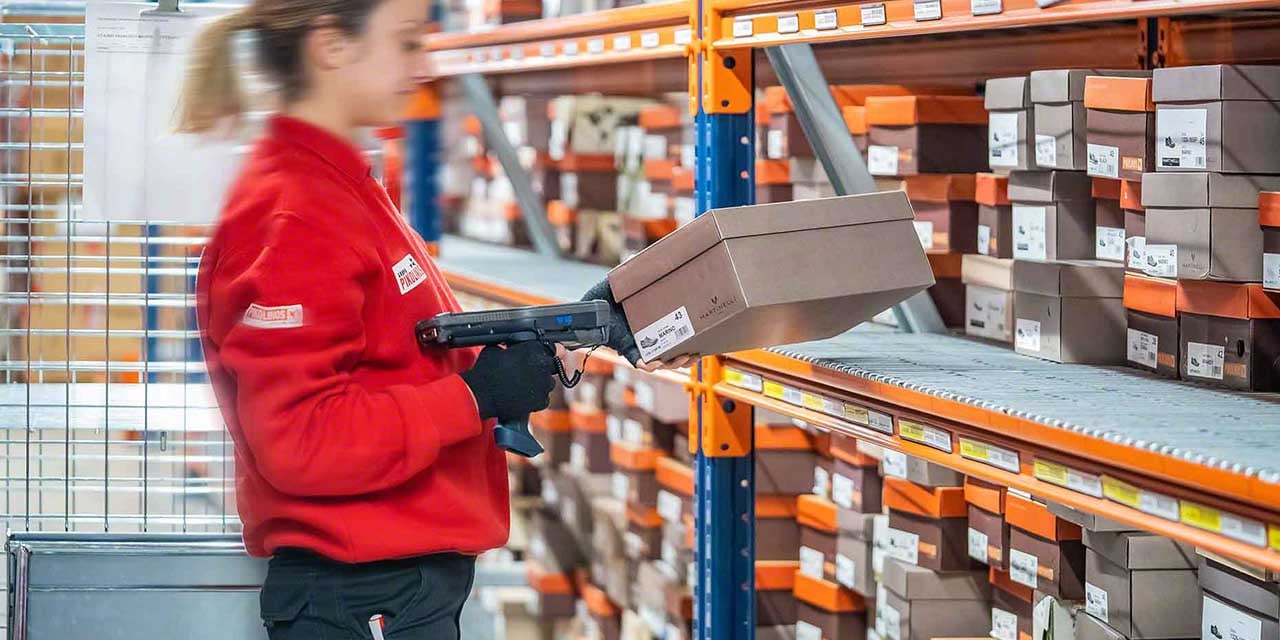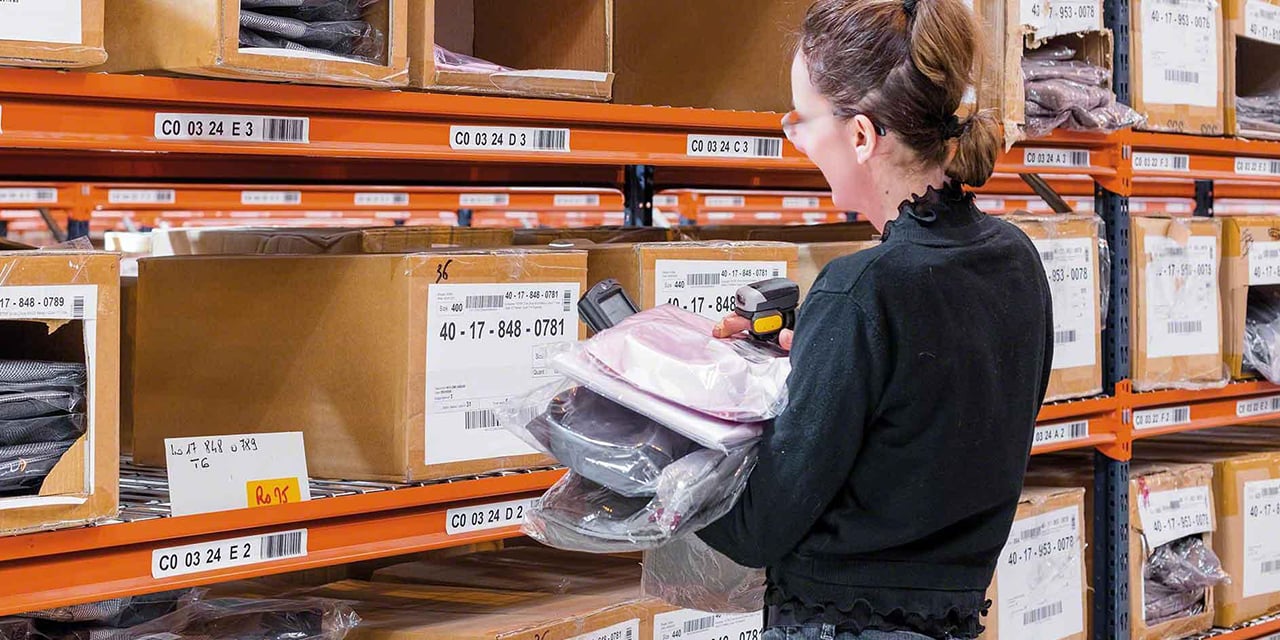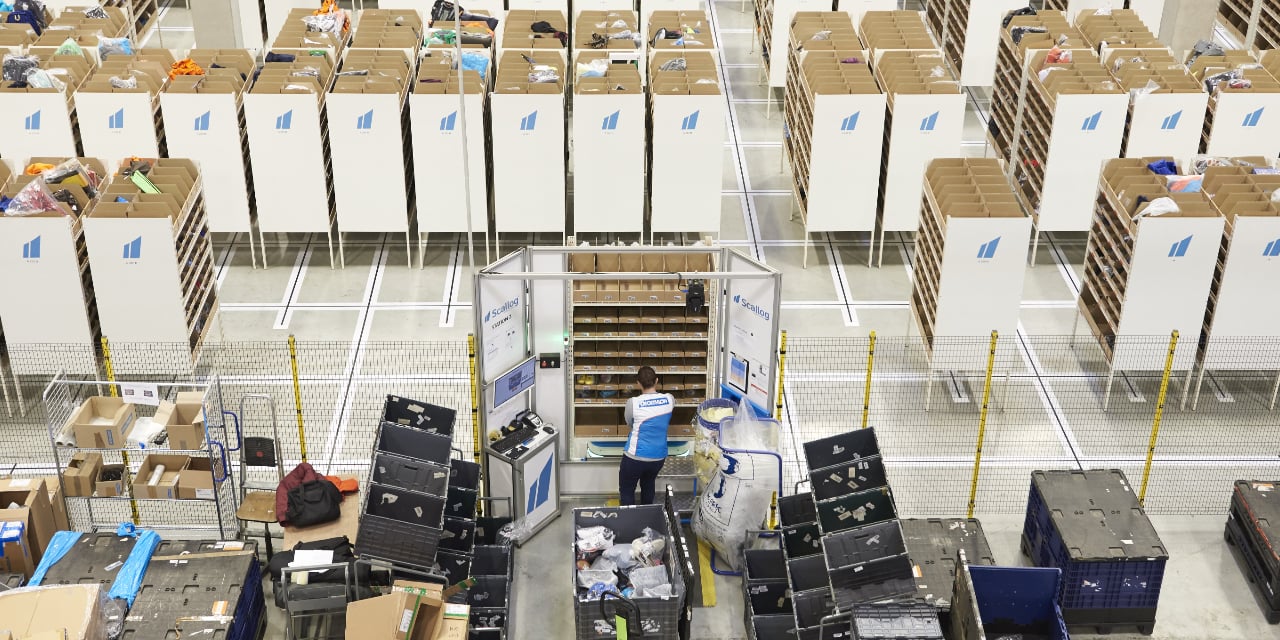Optimization of reverse logistics or “returns management” has become, in just a few years, a serious issue for the retail sector in France and Europe, and for e-commerce especially, with an unprecedented boom in online and marketplace sales.
Management of customer returns is, like delivery times, a key element of customer satisfaction. Returns are increasing all the time, with ever-increasing costs and processing burdens for the warehouse - and this impacts the efficiency of your enterprise’s logistics, as well as its margins and cash flow.
The challenge today is to optimize costs and speed up the processing of customer returns so products can be put back on sale, returned to the supplier, or recycled faster than ever before.
In this article we take a closer look at the live issues in returns management and examine how to improve the performance, productivity and costs of your logistics processes!

1. Reverse logistics - a formidable phenomenon in Europe!
Management of returns is a legal requirement in Europe, and far from being a negligible factor it’s actually among the top 3 criteria that trigger the purchase of a product, after price and delivery. In addition to transformation rate and the buying bottleneck, returns management is a key element in customer loyalty and satisfaction, and even a competitive advantage.
Many e-merchants have made free returns part of their sales pitch, and supply chains are now looking at ways to streamline their reverse logistics processes - and especially reduce costs.
One figure speaks for itself:
- the average logistical cost of managing a returned product is 10 euros, and that’s without transport!
Reverse logistics: key figures in France and Germany
In France, according to FEVAD, 24% of goods sold via e-commerce are returned, against an average of 10% in other sectors. In 70% of cases, products are returned for subjective reasons (colour, material etc.).
In Germany, the regulations on reverse logistics mandate free returns for consumers even before the actual purchase is processed. Returns can account for up to 35% or even 50% of the goods handled by the German giant Zalando.
Returns management: first and foremost, a legal obligation
In France, under the so-called HAMON law, consumers have 14 days to change their minds and return their orders: merchants are obliged to refund them, including standard delivery costs, by no later than 14 working days after the date of withdrawal or the return shipment of the product.
Also, the terms and conditions of every sale must specify the charge for the return of the item, and include a return or withdrawal form. Consumer can easily request and exercise their right to return a product and receive a refund as part of a “satisfied, exchanged or refunded” guarantee;.
So what are the most effective ways of minimizing the financial impact of product returns? Converting returns to exchanges in customer service is one way, as are blocking “serial returners” as Asos does, and above all getting returned products back on sale as soon as possible.
A compelling business and customer satisfaction argument
According to UPS, 76% of Internet users check the returns policy before confirming an online order. If the terms and conditions don’t suit, 51% cancel the order.
A key factor in sales and customer experience is an attractive returns management policy that is transparent, simple and fast for consumers, and fully contributes to their satisfaction and loyalty.
According to Chronopost, 97% of French consumers are appreciative of sellers who make it easy to return a product, and 90% would return to these sellers as a consequence.
Significant logistical costs
Returns management is an inherently random process which can impose considerable strain on your supply chain and incur high costs if it's not rationalized and optimized in the distribution centre.
Receiving returned products, checking them, and storing them pending their return to sale requires a succession of handling stages and requires operators to travel long distances.
In addition to making returns processing reliable, retailers and e-merchants must also ensure that items are “correctly” returned to stock or resale. Only a WMS solution and suitable logistics processes can guarantee quick return to sale without wasting time, products and stock.
All of these concerns are pushing retailers and e-commerce players to pay more attention to their reverse logistics / returns management in their endeavours to speed up the reintegration of returns into the sales circuit - and stand out from the competition for the quality of service they offer, a guarantee of customer confidence.
Also, with products with limited life spans it’s senseless to immobilize them for too long in the supply chain anyway.
2. Key levers for optimized reverse logistics
Reverse logistics comprises a set of workflows and processes connected with the recovery of a product sold to a customer, after it has left the fulfilment centre and been received by the customer.
It includes transport, reception of the goods, inspection, storage in a new location, order picking, packing and even recycling or destruction for sanitary reasons. In short, everything to do with organizing, controlling and optimizing returns!

Organize reverse logistics upstream
If they’re to keep their customers satisfied while streamlining management of their supply chains, retailers and e-commerce players have to define in advance return methods and procedures (post office, store, relay points) which make it possible to consolidate returns and thereby reduce their transportation costs. They must also make packaging easily reusable, and keep customers informed at every stage of the return management process.
Provide return labels
Attaching a return label (cross-indexed to the order number), sending a print-ready PDF file or including a special form with the order greatly facilitates the reverse logistics process.
Not only does this procedure keep the consumers satisfied, it also allows operators to quickly identify the returned product via barcode, without having to unpack it, and assign it to the right workflow - resale, repair, exchange or refund, as indicated by the consumer - as quickly as possible.
Optimize and streamline return workflows and processes in the warehouse
A logistics chain conceived and designed for returns management in accordance with the life cycle and seasonality of the products sold is based on the perfect coordination of the various links in the chain, from the optimization of WMS, TMS and ERP information flows to process control and the optimization of workflows in the warehouse.
Space must be set aside in the warehouse for the reception, inspection and storage - by unit, part or location - of returns. Particular attention must be paid to the different control steps, from automatic identification to weight control, to check the condition of returned products (new, damaged etc.).
The better returned products are tracked and optimized, the quicker they can be channelled towards the appropriate workflow - direct resale, sale over another channel (discount, marketplace etc.), return to supplier, recycling.
The objective is twofold:
- To reduce storage costs.
- To rapidly give products a “second life”.
For example, the costs of long-term storage of small amounts of products with a lifespan of two or three months can quickly exceed their unit value.
The mission of reverse logistics is therefore to restore value to the returned goods, either by speeding up their re-sale through accelerated processing, or by directing them to a new sales or recycling channel.
If returns management is to keep pace with the acceleration in processing and delivery times without loss of quality, automation - and more particularly the goods to man robotics solution offered by SCALLOG - is a valuable tool for reducing product handling and movement while improving the reliability of processes.
3. Automation for agile, fast and cost-effective reverse logistics

SCALLOG’s goods to man robotics solution has a leading role to play in making management of reverse logistics for individual products faster and more agile. Robots bring shelf units containing returned products to the operator, thereby accelerating the processing of returns from sorting to checking, allowing them to be put back on sale as quickly as possible.
We already have next-day deliveries. With the help of automation and robotics, we can also aim for next-day returns management, or even same-day, except for heavy and bulky products!
Automated sorting and storage of returns
With the SCALLOG solution, returned products - loose or boxed - are placed in an empty compartment in a shelf unit. The operator simply scans the product or box, or passes it to quality control. The item is automatically indexed and listed in the stock management solution or WMS.
The operator is released from the need to handle products and walk around the distribution centre. In order picking, returns are offered to the operator in a totally transparent manner.
Automation for reliable processing
With a robotics solution, you have the assurance of instant gains in track and trace, fluidity and productivity. All returns are tracked and entered in stock records, thereby eliminating inventory losses and errors.
Add to that an unparalleled productivity gain in your return logistics - by 350 to 450 picks per hour. That’s an 8-fold increasein processing rates compared to manual operations!
Automation of quality control
At present, 99.9% of quality control is performed by operators during picking. But this process can be automated too.
In the future, returns management and retail picking stations will be equipped with time-saving cameras that detect stains, wear, improper folding etc..
Reverse logistics / returns management is a real financial and commercial challenge for retailers and e-commerce players, and every day - every hour - counts when it comes to cutting costs and securing customer loyalty!
Managing returns at a loss and throwing away new products are no longer an option. Automation and robotics in particular are proving their effectiveness in returns management more than ever before in, and more and more distribution centres are installing such solutions.
They lead a transformation in reverse logistics that puts agile, responsible returns management logistics at the service of growth. And this at a time when France, following Germany’s example, is considering banning the destruction of unsold goods to limit waste!





Laisser nous votre commentaire